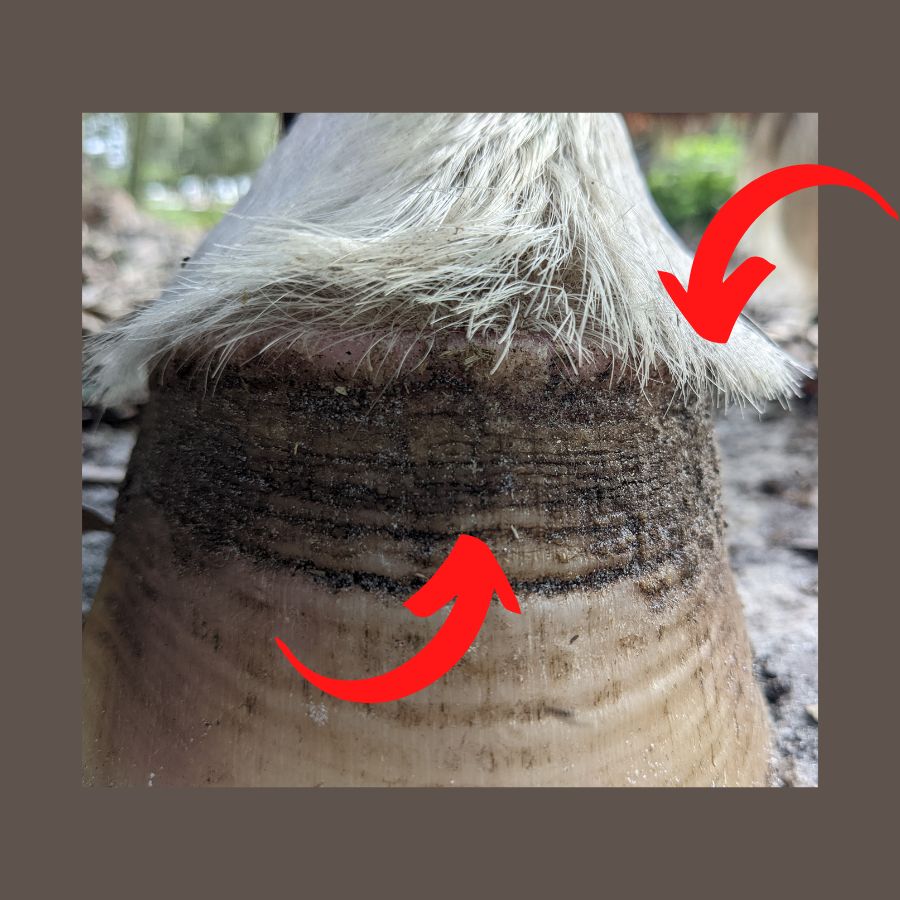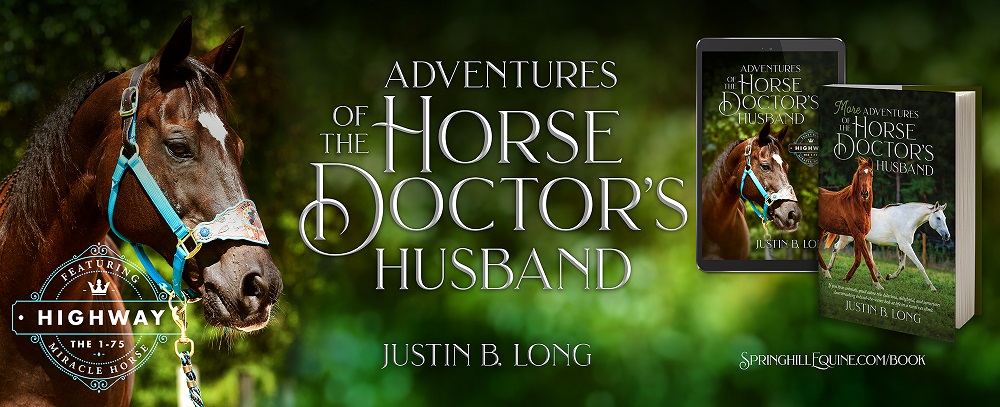Tuesdays with Tony
Today we’re going to talk about what’s going on when your horse’s coronary bands look weird. I’m going for a specific weird today, not just any old weird. Read on to learn more about Coronary Band Dystrophy, and autoimmune disorders in general.
What Does Coronary Band Dystrophy Look Like?
This is an issue my Docs can spot from a mile away. The hair at the coronary band sticks straight out so it’s parallel to the ground. The hoof wall is rough, with multiple horizontal ridges, and it has a dry, cracked appearance. Check out the arrows on my graphic to better see what I’m talking about. Horizontal ridges appear during laminitic episodes as well, but they are larger, and more distinct than those seen with coronary band dystrophy. The hoof wall itself also doesn’t get quite as roughened, dry, and crackly with laminitis.

The sole of the foot is often affected as well. The frog is particularly prone to thrush, and shedding excessively. All of this can contribute to cracks so deep the horse bleeds, kind of like you humans in the winter with your hands. I don’t like scritches from those rough hands! If your horse has coronary band dystrophy you may also want to check out the chestnuts. Some horses get similar cracking and splitting there as well.
Coronary band dystrophy is often going on for a while before it’s spotted. You humans, understandably, chalk it up to wet hair, dirt on the hoof, wet conditions, thrush, you name it. It’s very easy to overlook, especially in the early stages.
If you’ve got a great relationship with your veterinarian, and see them twice yearly for routine care, this may be noticed early. In that case, a biopsy of the coronary band can be used to identify the problem. This is a simple procedure where a small amount of tissue is removed and sent to a lab. There, it’s examined under a microscope to look for particular cells. These cells indicate the immune system is attacking the skin. If the symptoms are mild enough to require a biopsy to identify the problem, treatment will be easy and rewarding. Pat yourself on the back for being a good owner!
Okay, But What Is It?
Coronary Band Dystrophy is a type of a syndrome called Pemphigus. Pemphigus is a group of autoimmune disorders where the body decides skin is bad. This seems like a horrible idea, but sometimes there’s no convincing the immune system it’s wrong. Autoimmune disorders are weird like that. They occur when the immune system suddenly begins to see what is normally considered “self” as “not self.” They can happen in many different ways, and can be extremely difficult to treat. No one knows why the immune system suddenly turns on the body, and no one knows how to get it to go back to normal.
What To Do
Luckily for horses, coronary band dystrophy can usually be managed readily. Much like normal feet, they should be kept clean and dry. This is really hard in Florida during the summer, but honestly, it’s hard for everyone, everywhere. From there, regular application of a steroid cream to the coronary band helps get the immune system to calm down. This also works on the chestnuts if they’re affected.
Steroids are a blessing and a curse. They shut the immune system down when it’s being hyperactive, but they also keep the immune system from doing its very important job of keeping the body safe from invaders. The advantage with coronary band dystrophy is the steroids can be applied topically right where they are needed. This shuts the immune system down there, but not body wide. In that regard, this isn’t such a bad syndrome in the realm of bad things that can happen.
Coronary band dystrophy is a lesson in noticing the small things and talking with my Docs about those concerns. As official caretaker and treat supplier, you humans do know your horses. If you see something that concerns you, bring it up with my Docs. This is best done by sending an email into the clinic at vets@springhillequine.com with your concerns and a picture of the issue. You humans are good at doubting yourselves sometimes. As a cat, I find this a difficult concept, but let this week’s blog be a life lesson as well as a horse lesson. You’re welcome.
Until next week,
~Tony
P.S. If you’re new to this whole horse ownership thing, there’s a lot you need to learn from this cat. You can read my Blogs, watch videos on my YouTube Channel, listen to my Podcast, and read my books. Naturally, I’ve delegated the production of some of these things to my minions, but I make sure they do a good job providing you with all the horse knowledge they can. Why would I do all this for free, you ask? Because Springhill Equine Veterinary Clinic’s mission is to make the world a better place for horses (and dogs and cats and goats and sheep). This is what I do. Well, this, and take naps. Lots of naps. That’s a requirement if you’re a cat.
Tuesdays with Tony is the official blog of Tony the Clinic Cat at Springhill Equine Veterinary Clinic in Newberry, Florida. If you liked this blog, please subscribe below, and share it with your friends on social media! For more information, please call us at (352) 472-1620, visit our website at SpringhillEquine.com, or follow us on Facebook!
[jetpack_subscription_form title="Subscribe to Whinny's Wisdoms"]

